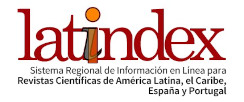UPCYCLING COMO ESTRATÉGIA DE NEGÓCIO EM CLUSTERS DO SEGMENTO TÊXTIL E CONFECÇÕES
DOI:
https://doi.org/10.54399/rbgdr.v19i1.6529Keywords:
Sustentabilidade, Upcycling, ClusterAbstract
Industrialization made consumerism an integral part of the economy, and the preoccupation with sustainable development has been debated within organizations, which seek ways to contribute to the future of the planet, aiming to minimize social and environmental impacts. In textile and clothing industry clusters, one way to minimize the environmental impact is the incorporation of Circular Economy, and upcycling can be highlighted among its practices. Under this assumption, this study aims to analyze the final customer's opinion on the incorporation of upcycling as a sustainable business strategy aimed at textile and clothing industry clusters, contributing with subsidies to the elaboration of strategies and actions for the incorporation of this practice in network companies. It is a quantitative study which utilizes a survey via online questionnaire and multivariate statistical analysis. Among the main results, it can be highlighted that the customer's frequency of practicing upcycling is correlated to their intention, to the conditions that prevent them to adhere and to the opinion of people who are considered important. It is inferred that there are many impeding conditions to the individual incorporation of the practice, and therefore there is opportunity for growth to companies, especially small businesses of the textile and clothing industry that operate in clusters, in which not only the economic and social values are involved, but also opportunities for inclusion of environmental value, considering the growth of the sustainability-focused market.
Downloads
Published
How to Cite
Issue
Section
License
Copyright (c) 2023 Revista Brasileira de Gestão e Desenvolvimento Regional

This work is licensed under a Creative Commons Attribution-NonCommercial 4.0 International License.
Authors who have their papers accepted and published in the Brazilian Journal of Regional Management and Development must agree to the copyright policy CC BY https://creativecommons.org/licenses/by/4.0/.
If the article is accepted for publication, the copyright is automatically assigned to the Brazilian Journal of Regional Management and Development.

















